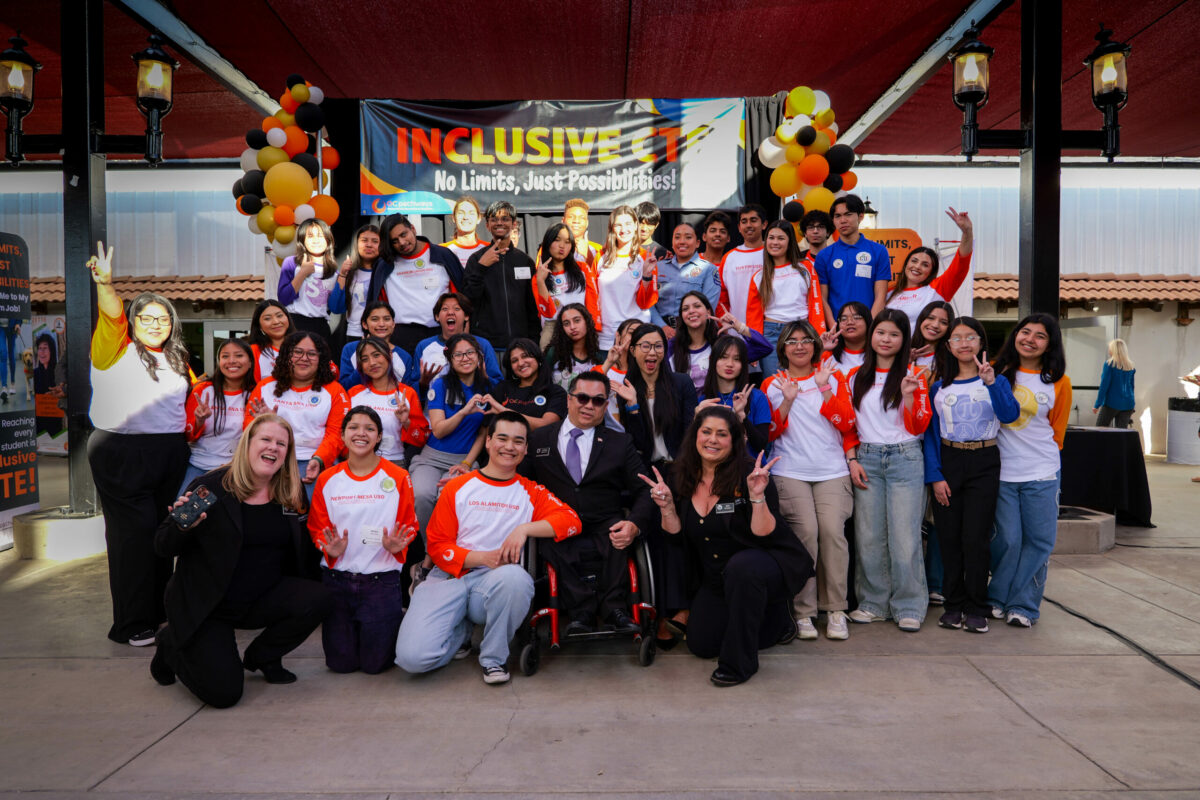
Growing up with a disability, I experienced firsthand how opportunity and inclusion can transform a life and open doors to a meaningful career.
I was born in Saigon during the Vietnam War and contracted polio at age 2, leaving me paralyzed from the waist down.
Not long after, I was found abandoned on the streets and taken in by an orphanage. At age 4, I was placed in one of the final Babylift flights out of Vietnam and brought to the United States, where I entered foster care before being adopted by Gregory and Judy Bean.
They welcomed me — along with dozens of other children — into their San Diego home. With their love and support, and with encouragement from teachers, church members and friends, I found not only stability but a deep sense of purpose.
As a child, I navigated an educational system that often failed to recognize the potential in students like me. Yet, thanks to educators and community members who believed in my abilities, I found the support I needed to succeed. Those experiences became the foundation of my career and fueled my lifelong commitment to creating opportunities for others, particularly those facing their own unique challenges.
Now, as the Orange County Superintendent of Schools, I bring a personal perspective to the conversation about workforce development and the vital role of career technical education, also known as CTE. Leading the Orange County Department of Education allows me to champion inclusive and equitable workforce development programs, which are part of our new strategic plan.
These initiatives go beyond building skills — they inspire individuals to see themselves as capable contributors to their communities.
Filling Middle-Skill Positions
Research consistently shows the economic value of investing in workforce development.
According to the Orange County Business Council’s 2024 “Workforce Indicators Report,” 78% of local employers struggle to fill middle-skill positions. Career technical education programs are a proven solution, offering students hands-on learning and direct pathways to employment while providing businesses with a skilled and ready workforce.
The financial benefits of inclusive workforce development are equally compelling. A study by the Manhattan Institute found that companies with robust training programs report 24% higher productivity and 15% lower turnover compared to those without such programs.
Furthermore, businesses that engage in structured apprenticeship and training programs can significantly reduce the average cost of hiring and training new employees, which has risen to $5,800 per person, according to a U.S. Chamber of Commerce Foundation workforce development survey.
Yet the importance of CTE extends beyond economics. Programs that focus on inclusivity — welcoming students with disabilities, foster youth, English learners and others — unlock potential in individuals who might otherwise be overlooked.
This approach not only strengthens the workforce but also builds a more equitable and compassionate community.
Real-World Impacts
Across Orange County, businesses and organizations are seeing the benefits of partnering with inclusive CTE initiatives.
Crisp Imaging, a digital printing company based in Costa Mesa, offers innovative training programs that integrate adaptive technologies, allowing employees with diverse abilities to excel. CEO Gary Crisp emphasizes that “neurodiversity is a strength,” and their inclusive practices have led to measurable business and community success.
Through hands-on job training in retail and logistics, Goodwill of Orange County similarly empowers individuals to achieve self-sufficiency while meeting critical workforce needs.
“Our mission is about unlocking potential and creating pathways to independence,” says Goodwill CEO Nicole Suydam. “By partnering with businesses and offering tailored training, we ensure that individuals of all abilities can thrive.”
Case studies like these highlight the importance of a structured, inclusive framework. And that very idea forms the foundation of the Orange County Department of Education’s inclusive CTE initiative, which is built on three pillars.
A Framework for Inclusion
Customized training pathways represent the first pillar. These are tailored programs that accommodate diverse learning styles and abilities. Next comes mentorship support from experienced professionals who are able to guide students through skill development and workplace integration. Finally, there’s technology integration, which leverages adaptive tools that ensure every individual can contribute fully to their role.
These elements create a comprehensive system where students and businesses succeed together. For students, the initiative offers a bridge from education to meaningful careers. For businesses, it delivers a sustainable talent pipeline while enhancing community engagement.
As a disabled individual who has overcome quite a few barriers, I am living proof of the power of inclusive education and workforce development. Yet my story is not unique. There are countless others in our communities whose potential remains untapped. By investing in inclusive CTE programs, we can change that narrative.
For businesses, the benefits are clear: increased productivity, reduced turnover and access to untapped talent pools. For our community, the impact is even greater: a more equitable society where every individual has the opportunity to contribute and succeed.
The success stories of Crisp Imaging and Goodwill illustrate how inclusive workforce development is more than just a moral imperative — it’s a smart business strategy. By partnering with programs like OCDE’s inclusive CTE initiative, businesses can play a vital role in shaping a more equitable and prosperous future for us all.
Let’s work together to unlock the full potential of Orange County’s workforce. Because when everyone has the opportunity to succeed, we all win.
For more information about OCDE’s inclusive CTE initiative and other workforce development programs, visit ocpathways.com.
